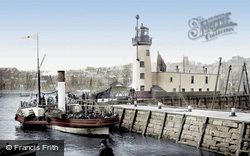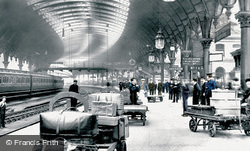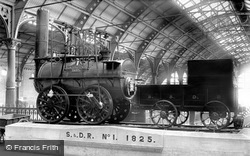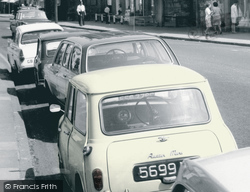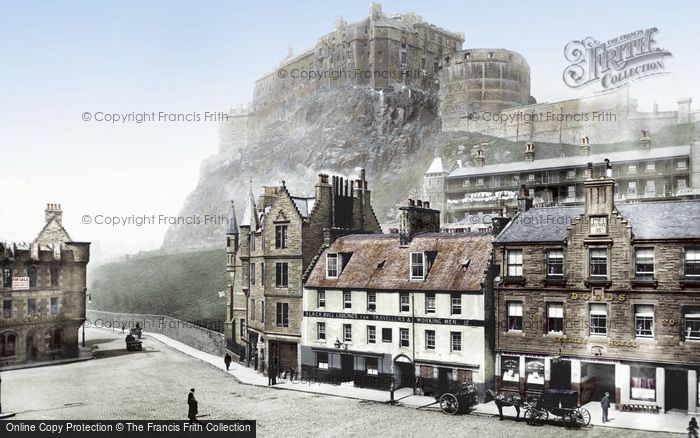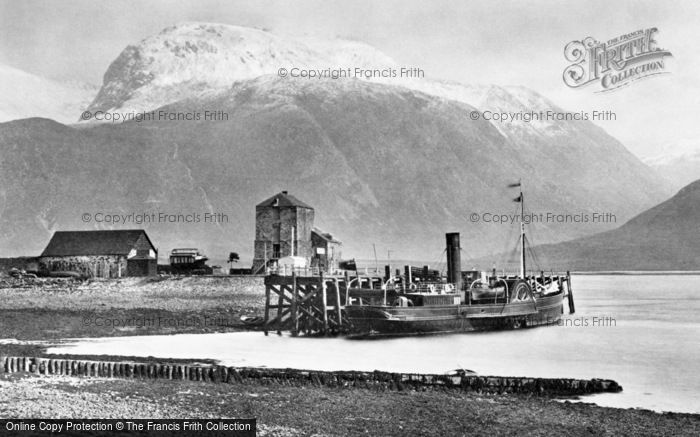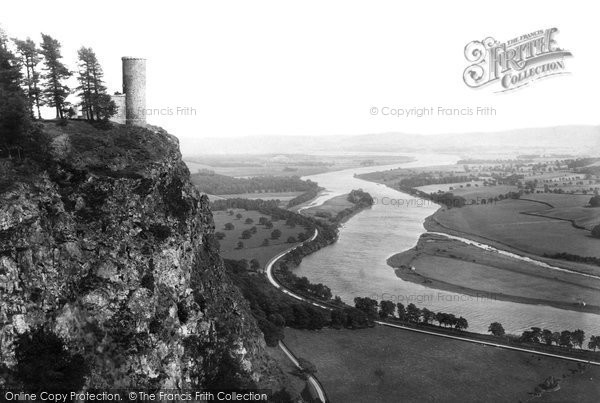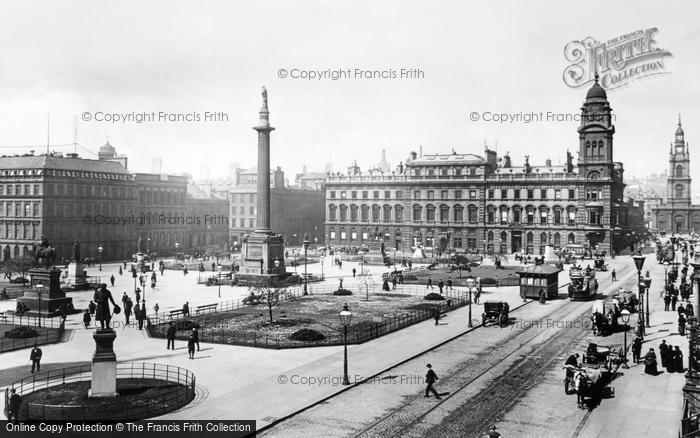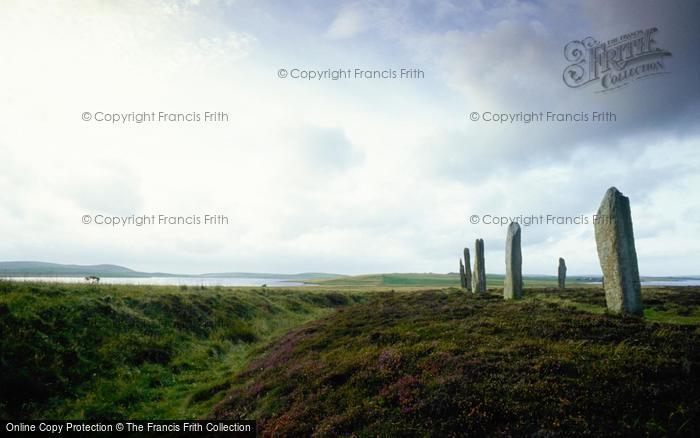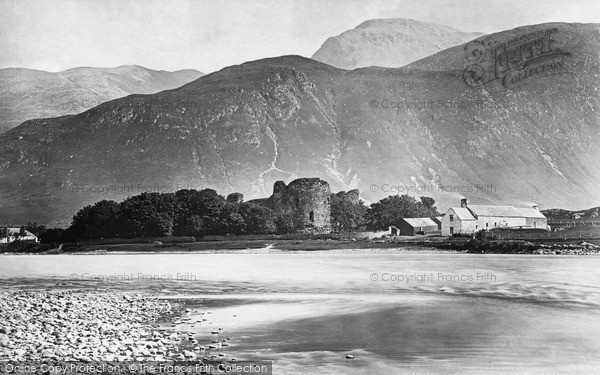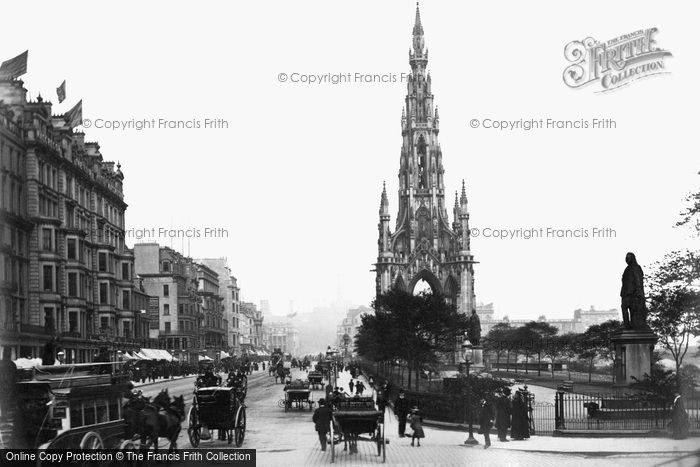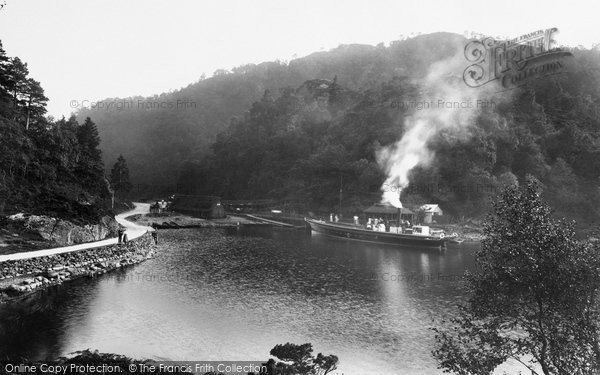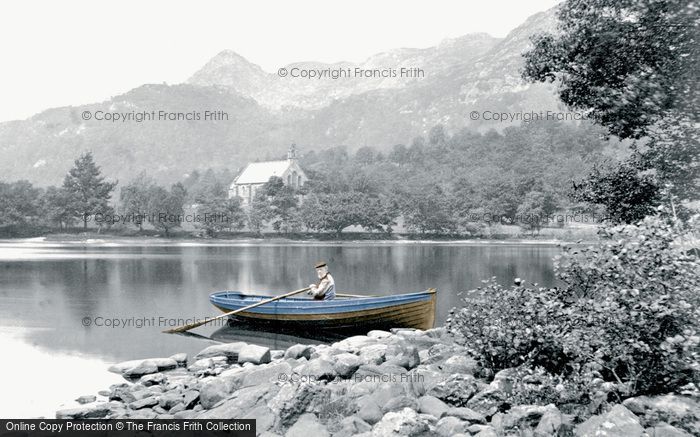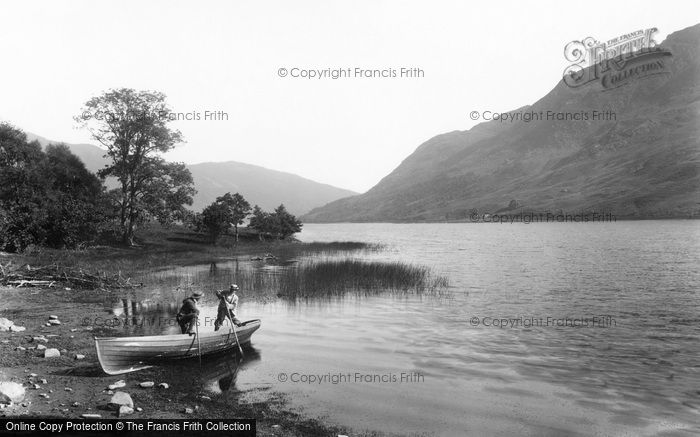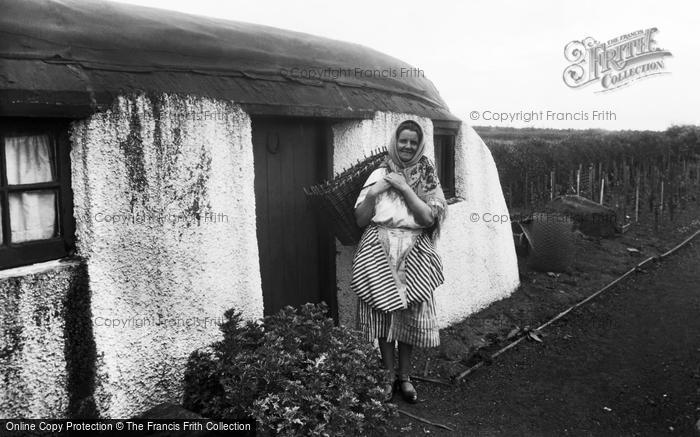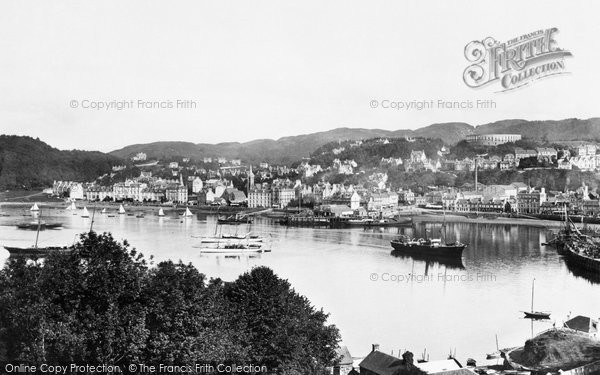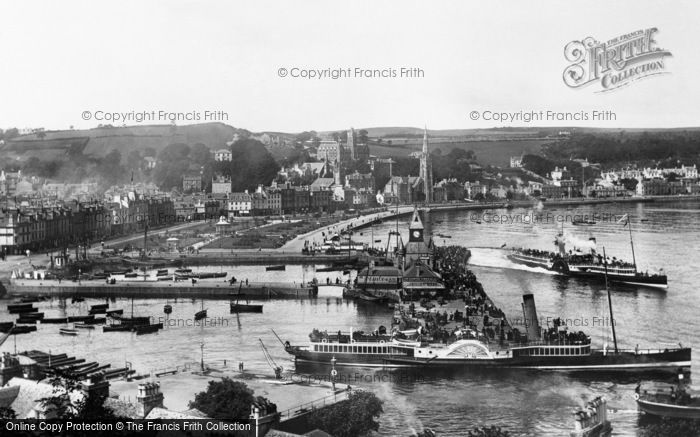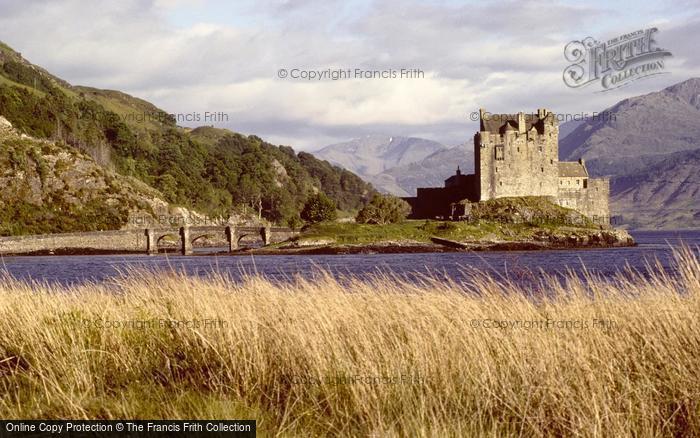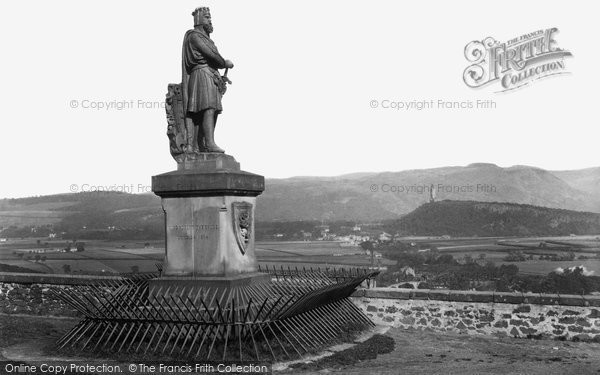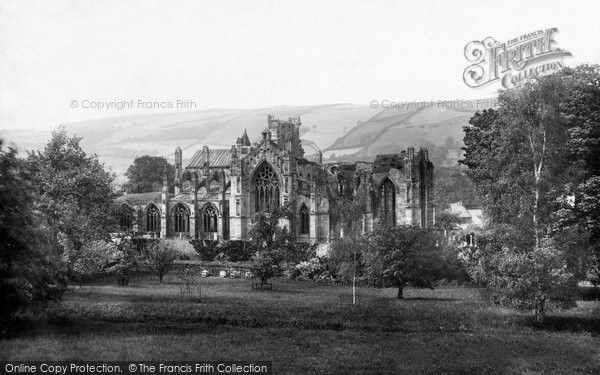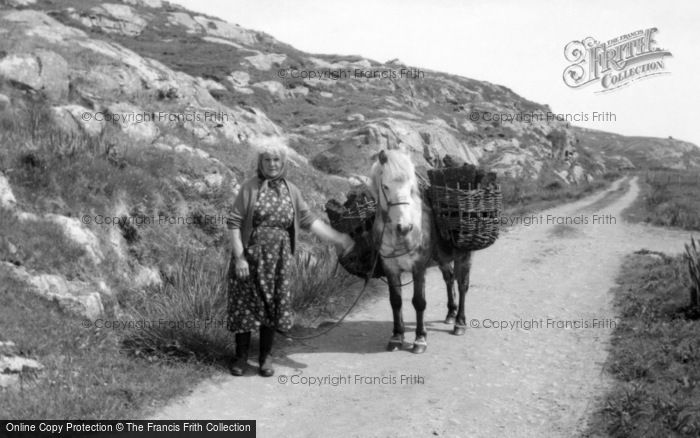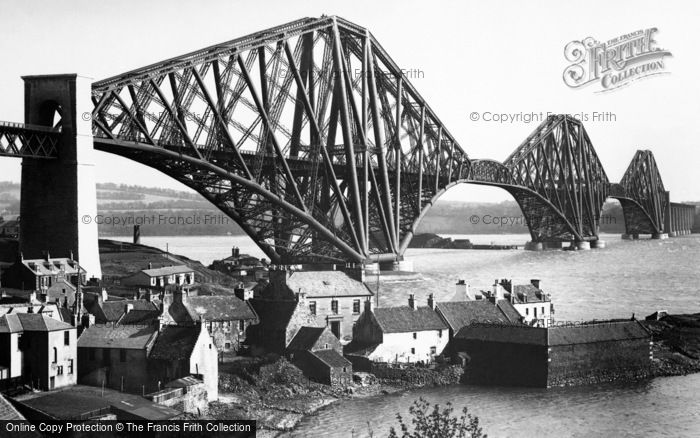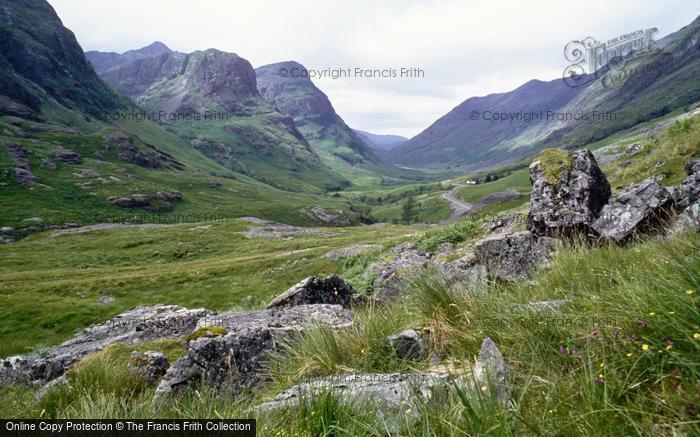Scenic Scotland
Published on
November 29th, 2023
Celebrate St Andrew’s Day with this selection of images of Scotland from The Francis Frith Collection!
The selection of photographs taken around Scotland in The Francis Frith Collection reflects the rich variety of Scottish buildings and scenery. There are outstanding prospects of Scotland’s rivers and old stone bridges; stretches of remote moorland country; views of the coast and the islands with fishing harbours and working boats; stunning vistas of magnificent mountain scenery and lochs; and views of peaceful old villages with traditional stone cottages. The rich heritage of Scottish history is revealed through atmospheric historical photographs of ancient castles, monuments, antiquities, and towns and cities celebrated for their fine buildings. The past is recaptured through photographs of magnificent palaces and country houses, many depicted as they were a century or more ago. We can also taste the delights of the traditional Victorian and Edwardian seaside holiday, and glimpse Scottish holidaymakers promenading and enjoying a day on the beach, or a trip on a paddle-steamer.
In this selection of photographs from the Frith archive, we celebrate the spectacular scenery of Scotland and some of its most iconic landmarks. Some of these are historical images in their original black and white version, others have been colour-tinted by hand in the old-fashioned style, and some are modern colour photographs showing the magnificent Scottish scenery in all its technicolour glory which have been added to the Collection in more recent times. Enjoy the view!
Ben Nevis in Scotland is the highest mountain in the British Isles, located at the western end of the Grampian mountains near the Highland town of Fort William. The name of the mountain is an Anglicised version of the Scottish Gaelic 'Beinn Nibheis'. 'Beinn' means 'mountain', but there are several possible meanings of 'Nibheis' – it is most commonly translated as 'malicious', but it may derive from 'nèamh-bhathais', meaning 'heavens' (from 'nèamh') and 'top of a man's head' (from 'bathais'), giving a more romantic interpretation of 'the mountain with its head in the clouds', or perhaps 'mountain of Heaven'. Known to both locals and visitors as 'The Ben', at 4,409 feet (1,344 metres) high it is very popular with climbers.
Scotland's longest river is the Tay, which flows for almost 120 miles from its source on the slopes of Ben Lui at the head of Glen Fyne before reaching the sea east of Dundee.
George Square in Glasgow was originally laid out in the 1780s and named in honour of King George III. The centrepiece of the square is the tall column topped with a statue of the Scottish author Sir Walter Scott (1771-1832). The original plan was to have a statue of King George on the column, but the city fathers went off the idea because the loss of the American colonies during his reign saw the end of Glasgow’s lucrative tobacco trade with North America and caused severe losses to its tobacco merchants, previously so wealthy that they were called ‘Tobacco Lords’. The square served to emphasise Glasgow’s self-proclaimed status as ‘the second city of the Empire’ and contained its magnificent municipal buildings. In the background of this photograph is the Merchants House with its great domed corner tower, which opened in 1877; upper storeys have since been added.
The Ring of Brodgar stone circle and henge on Mainland, the largest of the Orkney Islands, is one of the most spectacular prehistoric monuments in the British Isles, ranking with Avebury and Stonehenge in southern England as among the greatest of such sites. This enormous ancient ceremonial site is a massive stone circle that originally consisted of 60 standing stones, but only 36 survive today. Surrounding the stone circle is a large rock-cut ditch, and the Ring of Brodgar is the only major henge and stone circle in Britain which is an almost perfect circle, 104 metres (341 ft) in diameter. It is generally thought to have been constructed between 2500 BC and 2000 BC, and together with a concentration of other ancient sites in its immediate environs forms part of the UNESCO 'Heart of Neolithic Orkney' World Heritage Site.
This 13th-century castle, home of the Comyn family, is built in the form of a square, with round towers at the corners. Set on the banks of the River Lochy, it is one of Scotland’s earliest stone castles.
Considered to be one of the finest boulevards in Europe, Princes Street is one of central Edinburgh’s major thoroughfares. The Scott Monument in Princes Street Gardens commemorates the author Sir Walter Scott (1771-1832), who lived at several addresses in the city during his life and whose hugely popular novels and narrative poems helped make all things Scottish highly fashionable in the 19th century. This major landmark of Edinburgh was completed in 1844 and is the largest monument to a writer in the world.
This photograph was taken in the glorious scenery of the Trossachs National Park in the Highlands of Scotland. In the late 19th century the railway brought tourists here in droves to enjoy a day out in wild mountain country and admire the scenery celebrated by the popular Scottish author Sir Walter Scott in his novels and narrative poems. Here we see the steam-powered boat the 'Rob Roy' waiting to take on passengers for an excursion on Loch Katrine, one of the most picturesque of Scottish lochs. Sailings were regular throughout the summer months, with two trips a day from each end of the loch, the timings coinciding with the arrival of the steamer from Loch Lomond. In 1899 the ‘Rob Roy’ was replaced by the SS 'Sir Walter Scott' which still operates on this beautiful loch.
The Minstrel came once more to view
The eastern ridge of Benvenue,
For ere he parted, he would say
Farewell to lovely Loch Achray,—
Where shall he find, in foreign land,
So lone a lake, so sweet a strand!—
Lines from ‘The Lady of the Lake’ by Sir Walter Scott (1771-1832)
This small lock is sandwiched between Loch Katrine and Loch Vennachar, seven miles west of Callendar.
Located between Callander and Strathyre, Loch Lubnaig is part of the Loch Lomond and The Trossachs National Park. This small freshwater loch is fed by the River Balvaig from the north and nestles in the space between the mountains of Ben Ledi and Benvane to the south-west and Ben Vorlich to the north-east. The route of the former Callander and Oban Railway runs along the west shore of the loch which has now been converted to form part of the National Cycle Network’s 'Route 7', allowing cyclists and walkers to enjoy the beautiful scenery.
This bonny lady was photographed at Coldingham, a few miles north-west of the Border fishing town of Eyemouth. An annual event at Eyemouth is the Herring Queen Festival every July, a week of colourful festivities celebrating the town’s heritage as a fishing community. The highlight of the festival is the crowning of the Herring Queen after she has been brought into the harbour by boat with her maids of honour. In past years the Herring Queen had to be the daughter of a local fisherman, but now a panel of local people make the selection from nominees.
With surrounding hills dominating the skyline, and substantial granite buildings, this view becomes immediately identifiable as Scotland. Sited on the mainland near the Isle of Mull, Oban is the ferry port for the islands on the west coast of Scotland. The strange circular building overlooking the town on the right of this view is McCaig’s Tower, an unfinished replica of the Colosseum in Rome which was built by local banker and Oban citizen John Stuart McCaig in the 1890s as a memorial to his family.
Rothesay is the county town of the Island of Bute, in an ideal location in the sheltered 'sweet Rothesay Bay' of the old song:
It’s a bonnie bay at morning, and bonnier at noon,
But bonniest when the sun draps and red comes up the moon.
When the mist creeps o’er the Cumbraes and Arran peaks are gray,
And the great black hills, like sleeping kings, sit grand roun' Rothesay Bay.
This photograph was taken in 1897, during the golden age of the Clyde excursion steamer industry: as one paddler loads, another leaves. In the holiday period the pier at Rothesay is still as busy now as it was over a century ago when this view was taken. The main sailing destinations from here are to Wemyss Bay on the Ayrshire coast and, in the summer season, to the Island of Arran.
Familiar as the image featured on many shortbread biscuit tins and calendars, Eilean Donan Castle on the west coast of Scotland near Dornie is a perennially popular subject for artists and photographers. This atmospheric castle stands on a rocky island at the meeting place of three sea-lochs, Lochs Duich, Alsh and Long, and is nowadays joined to the mainland by a causeway. The original castle was a MacKenzie stronghold dating from the 13th century. Eilean Donan was bombarded into ruin by English warships in 1719 when it was being used as a base for a Jacobite rising, and it remained a ruin until 1911 when Lt Colonel John Macrae-Gilstrap, a descendant of its hereditary constables for the MacKenzies, bought the island and began to rebuild and restore the castle, work which was finally completed in 1932. Eilean Donan is now open to the public for much of the year for visitors to explore and enjoy.
Scotland has had a turbulent history with its English neighbour, but has never been conquered. Edward I of England claimed overlordship of Scotland in 1296 but English rule was resisted by two great names in Scotland’s struggle for independence, first by Sir William Wallace and then by Robert the Bruce, who in 1314 claimed the important victory over the English army of Edward II at Bannockburn. In 1603 James VI of Scotland inherited the English throne after the death of his distant cousin Elizabeth I and also became James I of England, uniting the two Crowns. Although he then transferred his court to London, Scotland kept its own government for another century. When Scotland did eventually incorporate politically with England under the Act of Union of 1707 it was by treaty, not conquest. In 1998 the Scotland Act was passed by the United Kingdom Parliament in response to a growing movement for a return to direct Scottish control over domestic affairs, and in 1999 the Scottish Parliament was reconvened as a devolved legislature with responsibility for most laws specific to Scotland and authority over home affairs – the first time it had met for nearly 300 years. This commemorative statue of Robert the Bruce stands on the esplanade of Stirling Castle. It was designed by George Cruikshank and sculpted by Andrew Currie in 1876-77 and represents the king as a tall chain mailed figure resting his hand on the pommel of his sword. Also visible on the hilltop in the background on the right of this view is the Wallace Monument, a tower standing on the shoulder of the Abbey Craig commemorating Sir William Wallace. The 67-metre (220-foot) sandstone tower in the Victorian Gothic style was completed in 1869 to the designs of architect John Thomas Rochead. The tower is open to the public, and a 246-step spiral staircase leads to a viewing gallery from where expansive views of the Ochil Hills and the Forth Valley can be enjoyed.
Despite its turbulent past, Scotland's Border country is now a peaceful land of beautiful hill scenery, watered by rivers such as the Tweed, Teviot, Yarrow and Jed, and watched over by the picturesque ruins of magnificent medieval abbeys like Dryburgh, Jedburgh, Kelso and Melrose - where the heart of Robert the Bruce is believed to have been buried.
Eriskay is a tiny island in the Outer Hebrides, a group of western isles in Scotland. The Eriskay Pony breed developed there in ancient times, generally grey in colour and with a dense, waterproof coat that protects it in harsh weather. Eriskay ponies were used by crofters as pack animals, for light draught work and as mounts, but the breed is now rare and its population is considered to be at critical status by the Rare Breeds Survival Trust.
One of the most iconic symbols of Scotland is the spectacular Forth Bridge, the cantilever railway bridge over the Firth of Forth that was originally built to carry the North British Railway's main line between Edinburgh and Aberdeen. It was designed by Sir John Fowler and Sir Benjamin Baker and was the first major structure in Britain to be constructed in steel. Work began on the bridge in 1882 and it was officially opened on 4th March 1890, so was still very new when this photograph was taken. It has an overall length of 8,094 feet (2,467 metres) including the approach viaducts, the lofty steel cantilevers are supported on granite piers, and the railway tracks run across the bridge at 150 feet (46 metres) above sea level. The Forth Bridge is Scotland's largest listed structure, and it still remains a vital part of the railway system, carrying up to 200 train movements a day. It was voted Scotland's greatest man-made wonder in 2016, and is a UNESCO World Heritage Site.
Located within the awe-inspiring Lochaber Geopark in the Highlands, Glencoe is perhaps Scotland’s most famous, most historic and most scenic glen. In 2011 it was also voted as Scotland’s most romantic landscape in a poll organised by the John Muir Trust and outdoors website walkhighlands.co.uk. Visitors to the Walkhighlands website were asked to vote from a shortlist of 15 beauty spots across Scotland and Glencoe was a clear winner, beating off competition from Sandwood Bay, Glen Affric, Arisaig and nearby Rannoch Moor. With its deep valley and rugged, towering mountain peaks, Glencoe is a spectacular natural wonder, the remnants of a 'caldera' or super-volcano that formed many millions of years ago and was later shaped by glaciers during numerous Ice Ages - a landscape that was carved out by fire and ice. The dramatic scenery of Glencoe was used as a location in a number of feature films such as 'Braveheart', 'Rob Roy', 'Harry Potter and the Prisoner of Azkaban' and James Bond's 'Skyfall', and will also be familiar to fans of the popular historical drama television series 'Outlander' based on the novels of Diana Gabaldon, as it featured in the opening credits of the first three seasons.
You may be interested in these related books:
Printed specially for you and with a free personal dedication available on almost all our titles with hundreds to choose from, our nostalgic local books make great gifts for someone or why not treat yourself and add some history to your bookshelves?
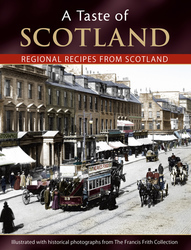
Free optional inscription available!
A Taste of Scotland
Travel around Scotland through the pages of this book and discover a selection of the delicious traditional food of the country, as well as stories and fascinating facts behind the recipes. Your journey is given added flavour by the delightful historical images from The Francis Frith Collection, showing the people and places of Scotland in the past. A Taste of Scotland includes 50 recipes, some traditional, some reflecting local produce that Scotland is famous for, some linked to characters or historical personages or events, some versions adapted to suit modern tastes.Rediscover 50 traditional locally-inspired dishes. Some recipes are modern interpretations using some of the fine local produce that Scotland is famous for - we hope that this unique book provides you with a true taste of Scotland!
A Taste of Scotland
(ISBN: 978-1-84589-462-7)
Compiled by Julia Skinner
You may be interested in these related books:
Printed specially for you and with a free personal dedication available on almost all our titles with hundreds to choose from, our nostalgic local books make great gifts for someone or why not treat yourself and add some history to your bookshelves?
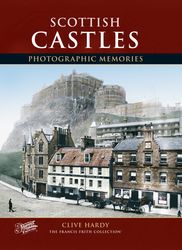
Free optional inscription available!
Scottish Castles
This fascinating book illustrated with archive photographs from The Francis Frith Collection shows a wide selection of castles in Scotland as they were recorded on glass plate and film in past times. The earliest photos date from the 1880s, and some show individual castles long before they underwent modern restoration. The accompanying text recounts the general history of castle-building through Scotland's turbulent history, as well as stories and information about each castle depicted in this book, often with fascinating insights into the lives of the people who lived in it. 'Scottish Castles' will provide hours of enjoyable and informative reading.
Scottish Castles
(ISBN: 978-1-85937-323-1)
Clive Hardy
You may be interested in these related books:
Printed specially for you and with a free personal dedication available on almost all our titles with hundreds to choose from, our nostalgic local books make great gifts for someone or why not treat yourself and add some history to your bookshelves?
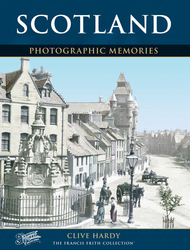
Free optional inscription available!
Scotland Photographic Memories
Travel back in time and revist the landmarks and places that are so characteristic of Scotland in the era before the motor-car dominated our landscape. This book will spark many memories for you and your family and will provide hours of enjoyable reading and reminiscing.
Scotland Photographic Memories
(ISBN: 978-1-85937-182-4)
Clive Hardy
You may be interested in these related books:
Printed specially for you and with a free personal dedication available on almost all our titles with hundreds to choose from, our nostalgic local books make great gifts for someone or why not treat yourself and add some history to your bookshelves?
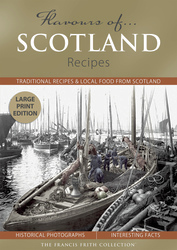
Free optional inscription available!
Flavours of Scotland
Nothing beats good home cooking, with delicious dishes made from local produce using traditional recipes - just like Granny used to make! Flavours of Scotland contains a selection of recipes, some traditional, some modern and reflecting local produce that the area is famous for, and some linked to historical characters or events. Discover the wonderful variety of traditional dishes and regional produce, and find out about the stories behind some of the recipes, as you use this book to cook up a true flavour of Scotland.
Flavours of Scotland
(ISBN: 978-1-84546-970-2)
You may be interested in these related books:
Printed specially for you and with a free personal dedication available on almost all our titles with hundreds to choose from, our nostalgic local books make great gifts for someone or why not treat yourself and add some history to your bookshelves?

Free optional inscription available!
Did You Know? Scotland
Containing fascinating facts, words & phrases, ghost stories, local recipes, sporting trivia and a quiz, and illustrated with evocative photographs sourced by the world-famous Francis Frith Collection, Did You Know? Scotland will challenge your local knowledge, and provide amusing and enjoyable insights into Scotland's history and heritage.
Did You Know? Scotland
(ISBN: 978-1-84546-949-8)
This post has the following tags:
Places,Nostalgia.
You may find more posts of interest within those tags.
Join the thousands who receive our regular doses of warming nostalgia!
Have our latest blog posts and archive news delivered directly to your
inbox.
Absolutely free. Unsubscribe anytime.

